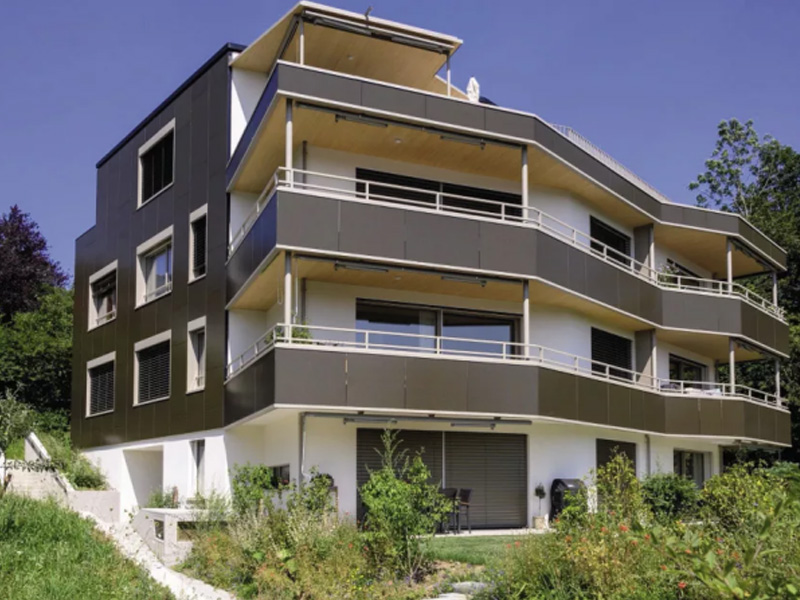建物一体型太陽光発電(BIP)は、競争力のない太陽光発電製品が市場に参入しようとしている場所だとされてきた。しかし、それは公平ではないかもしれないと、PVcomBの技術マネージャー兼副ディレクターであるビョルン・ラウ氏は述べている。
ベルリンのヘルムホルツ・ツェントラム氏は、BIPV 展開における欠けているリンクは、建築コミュニティ、建設業界、および PV メーカーの交差点にあると考えています。
PVマガジンより
過去10年間の太陽光発電(PV)の急速な成長により、世界市場は年間約100GWpの設置規模に達しました。これは、年間約3億5,000万枚から4億枚の太陽光モジュールが生産・販売されていることを意味します。しかし、建物への太陽光発電モジュールの組み込みは依然としてニッチな市場です。EUホライズン2020研究プロジェクトPVSITESの最新レポートによると、2016年に設置されたPV容量のうち、建物の外壁に組み込まれたのはわずか約2%でした。このわずかな数字は、エネルギーの70%以上が消費されていることを考えると、特に驚くべきものです。世界中で排出されるCO2はすべて都市で消費されており、温室効果ガス排出量の約40%から50%は都市部から発生しています。
この温室効果ガス問題に対処し、オンサイト発電を促進するため、欧州議会および理事会は、建物のエネルギー性能に関する2010年指令2010/31/EU(「ニアゼロエネルギービル(NZEB)」と称される)を導入しました。この指令は、2021年以降に建設されるすべての新築建物に適用されます。公共機関の入居予定となる新築建物については、今年初めに発効しました。
NZEBステータスを取得するための具体的な対策は規定されていません。建物所有者は、断熱、熱回収、省電力コンセプトといったエネルギー効率の側面を検討することができます。しかし、建物全体のエネルギーバランスが規制目標であるため、NZEB基準を満たすには、建物内または周辺での積極的な電力生産が不可欠です。
可能性と課題
太陽光発電の導入は、将来の建物の設計や既存の建物インフラの改修において重要な役割を果たすことは間違いありません。NZEB規格はこの目標達成の原動力となるでしょうが、それだけではありません。建物一体型太陽光発電(BIPV)は、既存のエリアや表面を活用して発電することができます。そのため、都市部に太陽光発電システムを導入するために追加のスペースは必要ありません。一体型太陽光発電によって生成されるクリーン電力の潜在的可能性は莫大です。ベクレル研究所が2016年に発表した調査によると、ドイツではBIPV発電が総電力需要に占める潜在的割合は30%を超え、イタリアなど南部の国々では約40%に達する可能性があります。
しかし、なぜBIPVソリューションは太陽光発電事業において未だにわずかな役割しか果たしていないのでしょうか?これまで建設プロジェクトではほとんど検討されてこなかったのはなぜでしょうか?
これらの疑問に答えるため、ドイツ・ベルリン・ヘルムホルツ・センター(HZB)は昨年、ワークショップを開催し、BIPVのあらゆる分野の関係者と意見交換を行い、需要分析を実施しました。その結果、技術不足そのものは存在しないことが明らかになりました。
HZBワークショップでは、新築または改修プロジェクトを遂行する建設業界関係者の多くが、BIPVの可能性とそれを支える技術に関する知識不足を認めました。建築家、プランナー、そして建物所有者の多くは、PV技術をプロジェクトに組み込むための十分な情報を持っていません。その結果、魅力的なデザイン、高コスト、そして導入の難しさなど、BIPVには多くの懸念が寄せられています。こうした誤解を解消するには、建築家や建物所有者のニーズを最優先に考え、これらの関係者がBIPVをどのように捉えているかを理解することが最優先事項です。
考え方の変化
BIPVは、汎用性や美観への配慮が求められない従来の屋上設置型太陽光発電システムとは多くの点で異なります。製品を建物の構成要素に組み込むように開発する場合、メーカーは再考する必要があります。建築家、施工業者、そして建物の居住者は、まず建物の外壁に従来の機能を期待します。彼らの視点から見ると、発電は付加的な特性です。これに加えて、多機能BIPV構成要素の開発者は、以下の点を考慮する必要がありました。
- さまざまなサイズ、形状、色、透明度を持つ太陽光アクティブ建築要素向けのコスト効率の高いカスタマイズされたソリューションを開発します。
- 標準規格と魅力的な価格の開発(理想的には、Building Information Modeling(BIM)などの確立された計画ツール向け)。
- 建築材料とエネルギー生成要素を組み合わせることで、太陽光発電要素を新しいファサード要素に統合します。
- 一時的な(局所的な)影に対する高い耐性。
- 長期安定性および出力の長期安定性と劣化、ならびに外観(色安定性など)の長期安定性と劣化。
- 現場固有の条件に適応するための監視および保守コンセプトの開発(設置高さの考慮、欠陥のあるモジュールまたはファサード要素の交換)。
- 安全性(防火を含む)、建築基準、エネルギー基準などの法的要求事項の遵守、
投稿日時: 2022年12月9日

